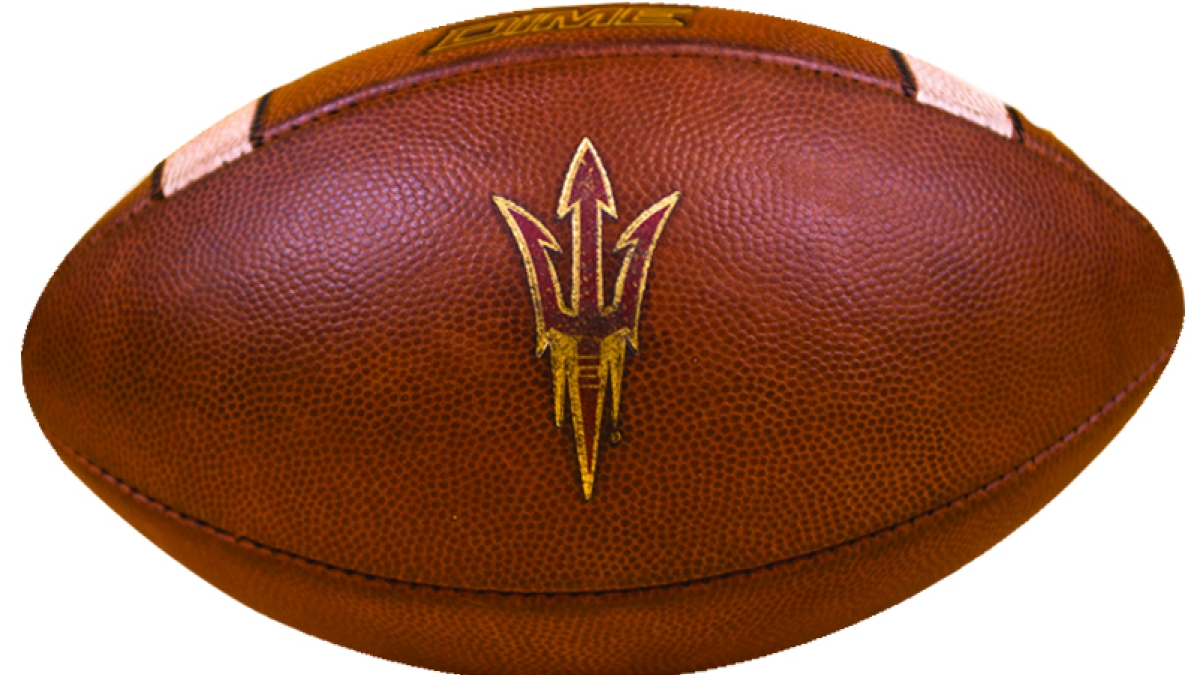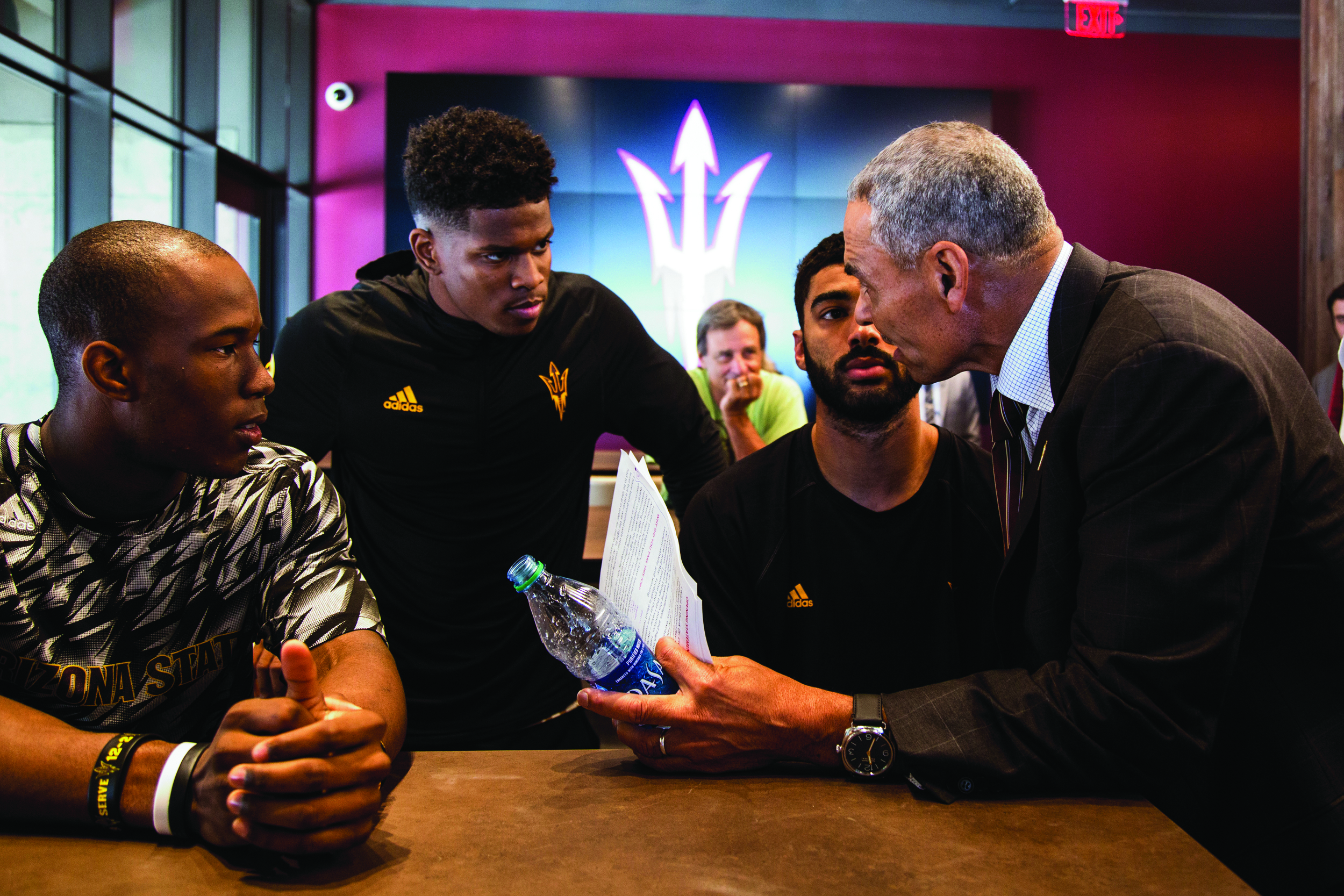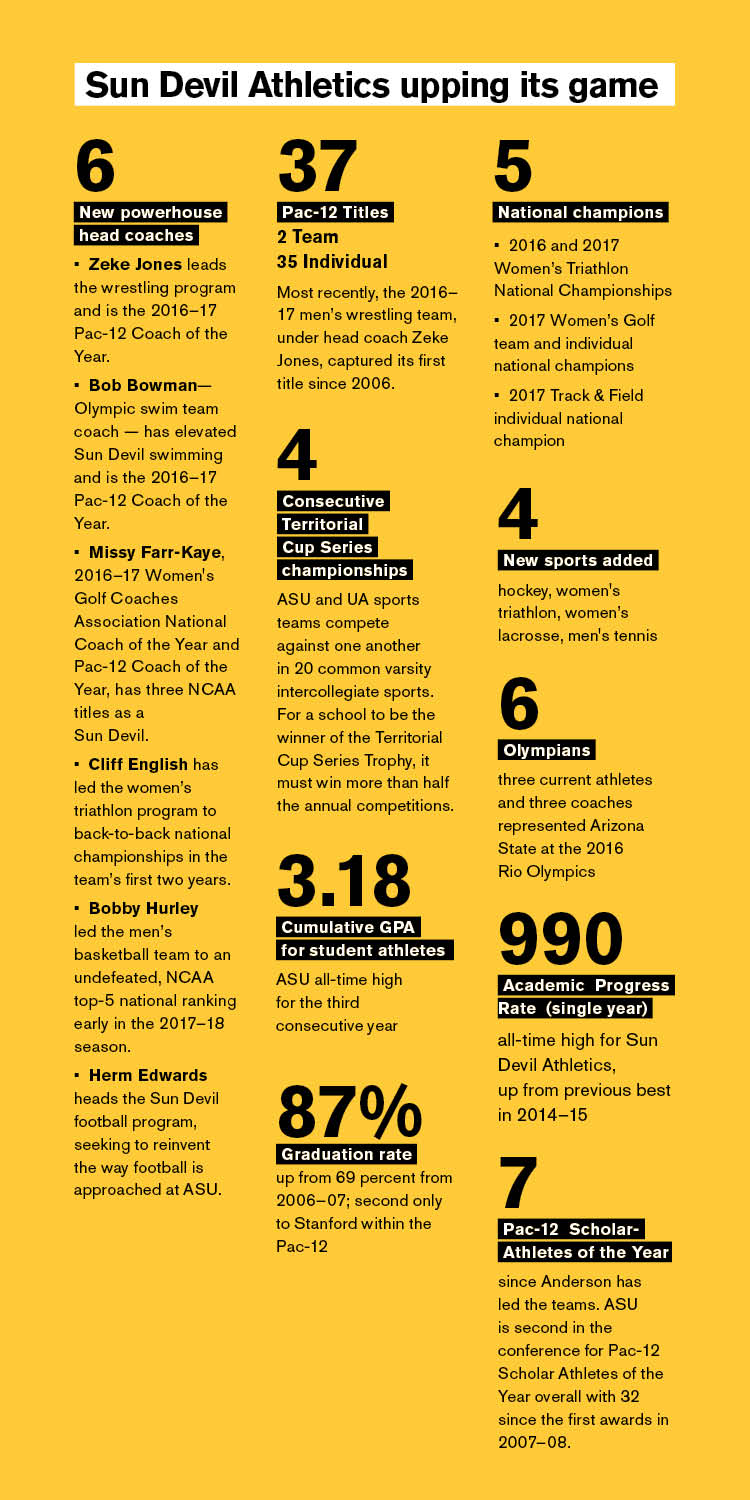What happens when the No. 1 university for innovation in the US sets out to reinvent college football?

The thing about evolution and revolutions: They are messy. Some don’t turn out well. And neither is always understood or appreciated at the time.
Arizona State University is attempting to revolutionize and evolve the Sun Devil Football program at the same time, with the polarizing naming of Herm Edwards as its 24th head coach.
In doing so, ASU wants to stop a revolution of another kind, the one in which a constant parade of coaches cycles through college football programs at great expense. Sportswriters call it “the carousel.”
The thing about a carousel: It never goes anywhere but in circles. It hasn’t worked for ASU.
For too long ASU football has been middling. Fired head coach Todd Graham won 46 games and lost 31. His predecessor, Dennis Erickson, had a 31-31 record. ASU hasn’t been to the Rose Bowl since 1997 or won one since 1987. It hasn’t won a conference championship outright since 1996.
ASU wants to get off the carousel.
“We have got to end that; otherwise you will never be able to compete in a rigorous Pac-12,” says Ray Anderson, ASU’s vice president of university athletics.
The university is endeavoring to re-engineer the football program.
Most of the recent headlines focused on Edwards the man. Few paid much attention to the reasons underlying his selection.
“We’ve had a great football tradition. We’ve had a great football program. We’ve had great football coaches,” ASU President Michael M. Crow says. “But we haven’t been able to build this culture of winning and achieving on all dimensions. We get some of them right for a while, but we can’t sustain it over time.”
Sun Devil football players Kyle Williams, Ryan Jenkins and Manny Wilkins talk with Coach Herm Edwards at the announcement event.
Crow talks of attracting top scholars and athletes, of football players only going on to the pros after graduating with a degree.
At his unveiling, Edwards talked of preparing great men, not just football players. He spoke of coaching as teaching and football know-how as the pursuit of knowledge. He said he only took the job because he believes in “the vision.”
He sounded at times like his master sergeant father and at other times like a thundering preacher from the Sunday pulpit. At all times, his words trumpeted commitment.
“That’s important to me,” he said repeatedly at his inaugural press conference.
But it’s not about the man. It’s about the plan.
“Let’s say you wanted to improve the four-year graduation rate, as we have. You don’t just wish for it, or think about it or pray for it. You have to go in and alter all aspects,” Crow says.
“I’m a big believer in the old adage that your performance is a function of your design,” Crow adds. “What we’re doing here is altering our design. We’re altering the way things are structured so that we can get a chance at an enhanced outcome.”
Essentially, ASU wants the football program to resemble more closely the structure of an NFL franchise: a unified front of owners, general managers and top coaches, all pulling in the same direction with recruitment, development, strategy and tactics.
Too often in college football, ASU is saying, the head coach is the football program. If that coach failed, he’d be fired, usually at high cost, and the carousel would turn again. If the coach excelled, another university would scoop up him and all his trusted assistants. The carousel would turn again.
“The college model has the head coach thinking he has to do it all and control it all. Therefore he gets distracted from the primary duties,” Anderson says.
Under the new system, Edwards will focus on critical jobs: closing the deal with top recruits, coaching the coaches, developing players and managing game plans. The rest will be delegated or shared. More resources will go toward scouting, and a back office will handle mundane logistics.
Edwards will get a five-year, escalating contract, averaging $2.5 million a year. Compensation grows with results.
“It is a very modest contract, by design, because it was never about the money for Herm,” Anderson says. “Pay for performance is what our whole deal is about. It’s not traditional at all.
“This new structure gave us the opportunity to break out of the status quo, which is mediocrity for the last 30 years.”
“If we had players come out of here to be Rhodes Scholars I’d be prouder of that than if they were on a Super Bowl team. Because we’ve prepared them for a leadership position for life.”
— Ray Anderson, ASU vice president for university athletics
Within days of his appointment Edwards hit the recruiting road. Recruiting is important to him. And Edward’s pedigree as a motivator is important to ASU.
But you can’t win football games only with heart. Football is physical chess. You can have the best, most-devoted athletes in the world, but they won’t win without a good game plan. And a game plan is no good without the players to execute it, or the coaches to craft it. Sometimes buy-in is slow to come in big, traditional institutions.
Here, in the devilish details, is where Edwards’ appointment hit headwinds with the public and punditry. In snap online polls on azcentral.com and House of Sparky, four readers in 10 said it was a mistake.
Sportswriters at CBS gave the announcement an F grade and called it a “head-scratcher.”
Writers cited Edwards’ mediocre record as an NFL coach for eight years. Others said he hadn’t been on the sideline since 2008 and not as a college coach since 1989. Writers wondered in print if the appointment weren’t a “buddy hire,” because Anderson used to be Edwards’ agent.
“There’s too much at stake here to hire a buddy,” Anderson said in response. “This was about the right fit at the right time.”
He expected criticism.
“The reaction wasn’t unanticipated because change really stuns people and in some cases scares people,” he says.
He attributes the outside backlash to a lack of understanding and says he “totally gets it.”
Many, for instance, didn’t know that ASU slipped to 58th in recruitment, among 65 teams in the Power Five conferences. Or that not one high schooler in California, ASU’s main recruiting ground, pledged to come here last year.
“If you want the players that are going to go out and win at a consistent rate, we weren’t doing those things,” Anderson says.
He, Crow and Edwards all point out that while Edwards spent the past eight years as an ESPN expert, he watched more clips of more teams than he ever could as a coach.
“He’s more plugged in than people think,” Anderson says.
And, they all point out, Dick Vermeil coached the St. Louis Rams to a Super Bowl win in 2000, 18 years after quitting the NFL and after 15 years as a TV expert.
ASU has been here before, selling change to skeptics. Often the university ended up winning critics over with results.
Many in academia scoffed at the notion behind the New American University: that ASU could serve its mission to provide an education to any who meet the requirements for admissions and to improve graduation rates at the same time. Accessibility and excellence were mutually exclusive, the critics said.
Yet, in 16 years the university nearly doubled in size and the graduation rate reflected that growth, rising from 27 percent to 53 percent.
ASU combined earth and space sciences into one department. It resulted in NASA research grants and missions to outer space.
In the athletic department, ASU has added four sports; brought in marquee names like men’s basketball coach Bobby Hurley and swim coach Bob Bowman, longtime mentor to the most successful Olympian of all time, Michael Phelps; and won 37 Pac-12 championships and five national championships. Three students competed in the Rio Olympics.
In the classroom, the metrics come closest to “the vision.” Two charts in the latest athletics department annual report track linear progress of student athletes’ academic success. Both climb steadily like a bull-run stock market ticker.
One shows graduation rates among athletes climbed from 69 to 87 percent since 2006. That’s an all-time high for Sun Devils and second in the Pac-12 only to Stanford. Three sports broke their records for graduating athletes.
The other chart measures the Academic Progress Rate, a calculated formula the NCAA requires to gauge how well athletes are staying in school. It has risen every year and now stands at 990. Universities must maintain a 930 rating or better to compete in NCAA tournaments.
It’s not numbers. It’s important to Anderson and company.
“If we had players come out of here to be Rhodes Scholars I’d be prouder of that than if they were on a Super Bowl team,” he says. “Because we’ve prepared them for a leadership position for life.”
Written by Sean Holstege; this story originally appeared in the January issue of ASU Thrive magazine.
More Sun Devil community

Chemistry PhD selected as 2024 Outstanding Graduate Student for The College
Editor’s note: This story is part of a series of profiles of notable spring 2024 graduates. On May 6, during ASU’s Graduate Commencement at Desert Financial Arena, Anuja Sharma will be awarded as an…

College of Health Solutions graduate's long journey gave her a new perspective
By Aidan Hansen Editor’s note: This story is part of a series of profiles of notable spring 2024 graduates. In 2015, Oregon-born Haley Barrong graduated with her bachelor’s degree in dietetics. She…

Popular music undergraduate launches entrepreneurial career
Editor’s note: This story is part of a series of profiles of notable spring 2024 graduates. Undergraduate student Winston Russell Turner said he feels like the universe brought him to ASU for the…

